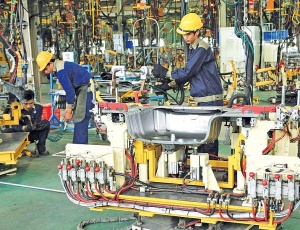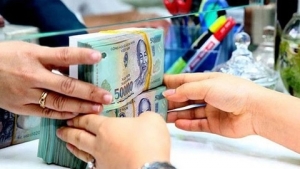GDP likely to meet NA growth target
How do you rate Vietnam's economic performance during the first four months of the year?
 |
Production and business activities have added to the rebound momentum since the fourth quarter (Q4) of last year, with improving performances each month.
For instance, in April, the index of industrial production (IIP) grew 0.8 per cent on-month but showed a 6.3 per cent on-year improvement.
The IIP rose 6 per cent in Q1 this year when compared to 2023, with the processing and manufacturing sector growing 7 per cent, after contracting nearly 3 per cent last year compared to the year before.
Foreign direct investment was also a highlight during this period. In the first four months of this year, Vietnam saw over $9.25 billion from overseas, up 4.5 per cent on-year.
Of this figure, newly registered volume approximated $7.1 billion, committed to about 970 projects, soaring 73 per cent in the capital value, and up nearly 29 per cent in the number of projects compared to 2023.
The import/export sector was also a stellar performer, with total import export value touching just below $239 billion in the first four months, up more than 15 per cent on-year, in which export values grew 15 per cent and import values rose 15.4 per cent.
Are you happy with the rate of public investment disbursement during the same period?
That also demonstrated encouraging results. The Ministry of Finance’s figures show that during this period, the total of disbursed public investment came to around $4.83 billion, equal to 16.4 per cent of the projection, and equal to 17.5 per cent of the task assigned by the Prime Minister.
The disbursement rate of public investment so far this year has been the best in recent years, providing important growth motivation in the forthcoming period.
Do you agree with the growth targets set by the NA for 2024?
The NA is aiming for GDP growth ranging from 6.0-6.5 per cent for the year.
In Q1, GDP expanded 5.66 per cent, the best performance since 2020. It is most likely that economic growth will hit about 6 per cent for the year, so the 6.5 per cent target set by the NA could be challenging.
Although the economy seems to be getting back on track, it still faces myriad hardships, such as the US-China spat.
Furthermore, domestic consumption has yet to rebound to pre-pandemic times. Figures from the General Statistics Office show total retail sales and service revenue rose by just 8.5 per cent in Q1, much lower when compared to last year, which saw a jump of 13.3 per cent and the average growth pace of 11 per cent per year in pre-pandemic years.
In addition, credit growth was also the lowest in many years in a low-interest environment. This attests to low demand from businesses.
Another factor the number of firms exiting the market remains larger than those entering it, with 21,600 versus 20,300.
 | Vietnam's economic growth expected to pick up in 2024 Vietnam’s economy is expected to post 6 per cent growth in 2024, up from 5.1 per cent growth in 2023, on the back of improving external demand, a pickup in domestic demand, and robust foreign direct investment (FDI) inflows, according to a report by the ASEAN+3 Macroeconomic Research Office (AMRO) released on April 9. |
 | Economic experts mull over best way to aid growth Financial experts are weighing up the best options for Vietnam to support the country's still nascent economic growth and ensure financial market stability. |
 | Commercial banks' credit growth picture in Q1 through expert lens Le Hoai An, a banking consultant and trainer at Integrated Financial Solutions, talked with Hong Dung on the credit landscape in the first quarter of this year, its impacts on banking stocks' performance, and how some banks have tackled current challenges to achieve better growth. |
What the stars mean:
★ Poor ★ ★ Promising ★★★ Good ★★★★ Very good ★★★★★ Exceptional
Related Contents
Latest News
More News
- Businesses ramp up production as year-end orders surge (December 30, 2025 | 10:05)
- Vietjet chairwoman awarded Labour Hero title (December 29, 2025 | 13:06)
- How to unlock ESG value through green innovation (December 29, 2025 | 10:03)
- AI reshapes media and advertising industry (December 29, 2025 | 08:33)
- FPT and GELEX sign deal to develop blockchain tech for global markets (December 29, 2025 | 08:29)
- Vietnam’s GDP forecast to grow by 9 per cent in 2026 (December 29, 2025 | 08:29)
- Women entrepreneurs are key to Vietnam’s economic growth (December 29, 2025 | 08:00)
- Vietnam's top 500 value-creating enterprises announced (December 27, 2025 | 08:00)
- The PAN Group shaping a better future with ESG strategy (December 26, 2025 | 09:00)
- Masan Consumer officially lists on HSX, marking the next phase of value creation (December 25, 2025 | 13:20)

 Tag:
Tag:



























 Mobile Version
Mobile Version